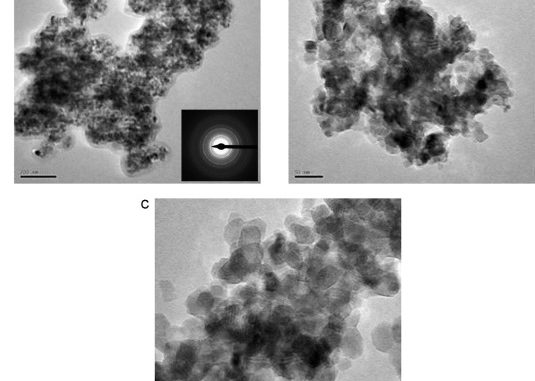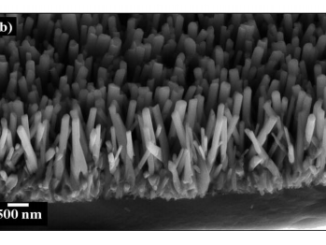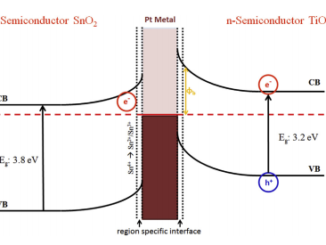
Au and Pd nanoparticles supported on CeO2, TiO2, and Mn2O3 oxides
Abstract: Gold and palladium nanoparticles were incorporated on CeO2, TiO2, and Mn2O3 supports prepared by a sol–gel method. The samples were characterized by X-ray diffraction (XRD), X-ray photoelectron spectroscopy (XPS), energy dispersive spectroscopy (EDS), transmission electron microscopy (TEM), high resolution TEM (HRTEM), scanning TEM (STEM) in high angle annular dark field mode (HAADF), and energy filtered TEM (EFTEM) using electron energy loss spectroscopy (EELS). The XRD diffractograms presented sharp and intense peaks indicating that the samples are highly crystalline, but it did not detected any peak corresponding to Au or Pd phases. This indicates that the Au and Pd NPs were incorporated into the structures of the oxides. It was not possible to obtain an Au 4f spectrum for Au/Mn2O3 due to an overlap with the Mn 3p spectrum. The XPS Au 4f spectra for Au/CeO2 and Au/TiO2 present negative chemical shifts that could be attributed to particle-size-related properties. The XPS Pd 3d spectra indicate that for both CeO2 and TiO2 substrates, the Pd NPs were in the metallic state, while for the Mn2O3 substrate, the Pd NPs were oxidized. The HRTEM results show the formation of nanocrystalline oxides having particles sizes between 50 and 200 nm. TEM micrographs show that the addition of Au caused the formation of Au clusters in between the CeO2 NPS, formation of Au NPs for the TiO2 support, and homogeneous distribution of Au clusters for the Mn2O3 support. The addition of Pd yielded a homogeneous dispersion throughout the CeO2 and TiO2, but caused the formation of Pd clusters for the Mn2O3 support.
Author(s): Paranhos Costa, Fabio Luiz; Costa, Fernanda das Neves; Ferreira de Albuquerque, Ana Carolina; et al.
Journal of Computational and Theoretical Nanoscience
Volume: 11 Issue: 8 Pages: 1732-1737 Published: 2014
DOI: 10.1166/jctn.2014.3559
PDF: Au and Pd nanoparticles supported on CeO2, TiO2, and Mn2O3 oxides




